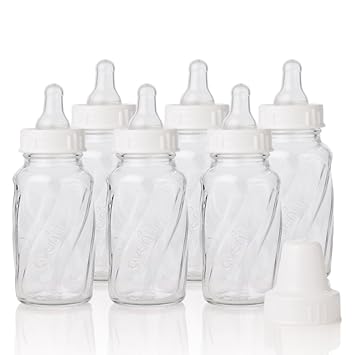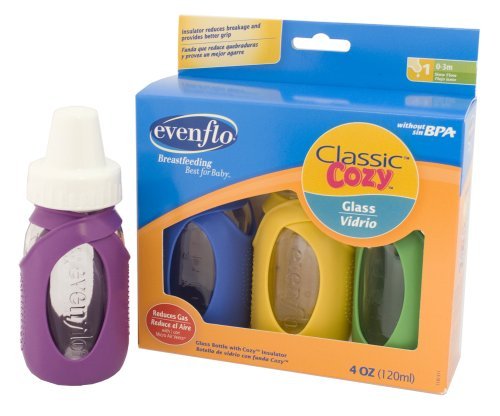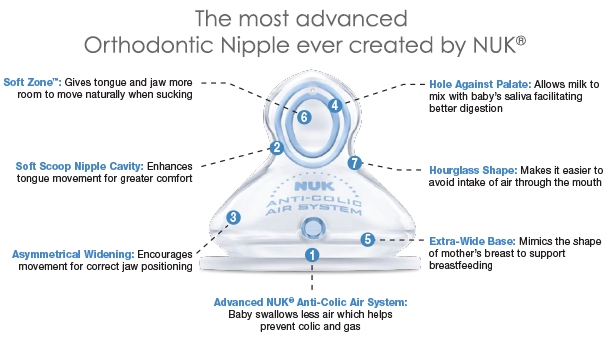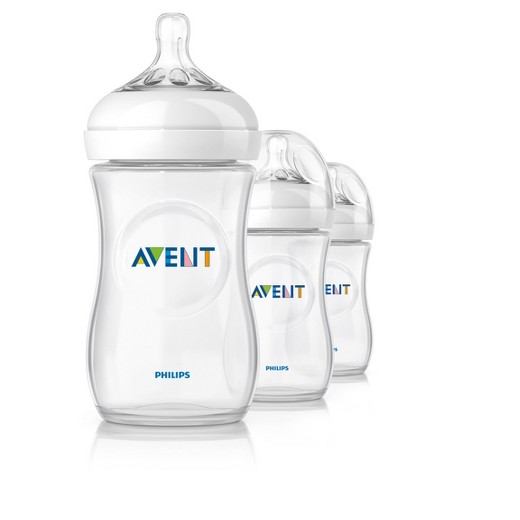How to buy bottles and nipples
Date Posted:10 January 2018
How to buy bottles and nipples
The lowdown on bottles and nipples
When it comes to babies and bottles, there’s no formula for success. Some babies will take any bottle with a smile. Some take to a particular type of nipple or bottle and outright refuse a different brand. And some babies have less colic, gas, and spit-up with certain bottles. (Many bottles are designed to prevent these feeding problems by venting air from the more effectively.)
You may also find that your baby doesn't have a preference, but you probably will if, say, a particular brand of bottles and nipples leaks or has too many little parts to clean.
To start, buy or register for a small selection of bottles and nipples – either a few different bottle and nipple combinations or 2 different brands of newborn starter sets. Ask friends which brands they recommend, and check reviews online.
To make it easier to transition a breastfed baby to a bottle, manufacturers have designed various types of bottles and nipples to mimic the feel of nursing. Again, you may have to try a few to find one that works for your baby.
Baby bottles and nipples buying guide (Before You Buy series)
Bottles
Bottle material: Glass, silicone, plastic, and stainless steel are the most common materials.
· Plastic is light, ubiquitous, shatterproof and inexpensive, but parents worry about chemicals even in BPA-free plastic (read more about BPA in Important Safety Notes, below). Plastic bottles also deteriorate, so they need to be replaced regularly.
· Glass is heavy and can shatter (you can buy silicone sleeves that go over glass bottles to prevent this), but it’s BPA-free. Glass bottles are sold widely and last longer than plastic ones but are more expensive.
· Silicone bottles are light, unbreakable, BPA-free, and often soft but more expensive than plastic and glass. Often silicone bottles aren’t sold in drugstores or grocery stores, which can be inconvenient if a nipple cracks or breaks and you need a quick replacement.
· Stainless steel is light, unbreakable, BPA-free, and lasts for a long time, but like silicone, these bottles can be expensive and hard to find.

Bottle shape: Bottles come in a wide variety of shapes. Traditional ones are tall and slightly curved or angled. Many bottles on the market claim to be easier for babies to hold, have an ergonomic design, or angled necks to make them easier for you to hold. Wide-necked bottles may make measuring formula easier; they may also not fit into drink-holders on strollers or in cars.

Disposables: Bottles with drop-in plastic inserts filled with formula or breast milk can be handy while on the go and are easy to clean: just toss the liner and wash the nipple. Each insert can be used only once.
Venting systems: Many bottles are marketed as preventing colic; they may have straw-like components that fit into your bottle to prevent your baby from ingesting gas-causing air bubbles, or may have venting systems built into the nipple or bottom of the bottle. The jury’s still out on whether these systems work, but many parents firmly believe they do.
Size and number: The number of bottles you'll need to own can range from about 4 to 12, depending on whether you'll primarily be bottle-feeding or breastfeeding. Start with 4-ounce bottles. They're perfect for the small amounts of breast milk or formulanewborns eat in one sitting. Shift to 8- or 9-ounce bottles at about 4 months, or whenever your baby's growing appetite makes bigger bottles more practical.
Nipples
 Nipple material: Nipples generally come in either latex or silicone varieties. Latex nipples are softer and more flexible, but they don't last as long and some babies are allergic to them. Silicone nipples are firmer and hold their shape longer.
Nipple material: Nipples generally come in either latex or silicone varieties. Latex nipples are softer and more flexible, but they don't last as long and some babies are allergic to them. Silicone nipples are firmer and hold their shape longer.
 Nipple shape: Traditional nipples are shaped like a bell or dome. Orthodontic nipples, designed to accommodate your child's palate and gums, have a bulb that's flat on the side and rests on your child's tongue. Flat-topped nipples and wide nipples (used with wide bottles) are said to feel more like Mom's breast and may be a good bet if you plan to switch between breastfeeding and bottle-feeding.
Nipple shape: Traditional nipples are shaped like a bell or dome. Orthodontic nipples, designed to accommodate your child's palate and gums, have a bulb that's flat on the side and rests on your child's tongue. Flat-topped nipples and wide nipples (used with wide bottles) are said to feel more like Mom's breast and may be a good bet if you plan to switch between breastfeeding and bottle-feeding.
Size and flow: Nipples come in a range of sizes and flow speeds, from slow to fast. Preemies and newborns usually need the smallest size (often called "stage 1"), which has the slowest flow. Babies graduate to larger sizes and a faster flow as they get older, can suck more effectively, and drink more breast milk or formula.
Nipples are marked with the size and a suggested age range. Don't be concerned if your baby doesn't follow these guidelines exactly. You may have to try a few different nipple sizes to find one that works best for your baby. Watch to make sure your baby isn't having a hard time getting milk or getting so much that he's choking or spitting up. And, of course, discuss any feeding concerns with your baby's doctor.
 Disposables: Disposable nipples can come in handy when you're traveling or on the go. These are sold prepackaged and sterilized, so they're convenient to pop on a bottle. But they have to be tossed after one use.
Disposables: Disposable nipples can come in handy when you're traveling or on the go. These are sold prepackaged and sterilized, so they're convenient to pop on a bottle. But they have to be tossed after one use.
FYI! Breast milk or formula should drip steadily out of the nipple, not pour out in a stream. This can happen if the flow is too fast for your baby, or if you've been using a nipple for a while and the hole has cracked and gotten larger. Find out more signs it's time to replace nipples and bottles.

Accessories
Many parents find that bottle warmers, insulated tote bags, bottle-drying racks, and dishwasher baskets that hold bottle parts are helpful to have.
· Concerns about chemicals in plastic baby bottles – particularly the chemical bisphenol A (BPA) – have driven a renewed interest in glass bottles, as well as sales of alternative materials like silicone and stainless steel. In 2012 the U.S. Food and Drug Administration banned BPA in the manufacture of all baby bottles.
Though research on BPA continues, the American Academy of Pediatricians recommends parents take precautionary methods to reduce BPA exposure:
· Avoid clear-plastic baby bottles or containers with the recycling number 7 and the letters “PC” imprinted on them. Many contain BPA.
· Consider using certified or identified BPA-free plastic bottles.
· Use bottles made of opaque plastic. These bottles (made of polyethylene or polypropylene) do not contain BPA. You can also look for the recycle symbols with the number 2 or 5 in them.
· Because heat may cause the release of BPA from plastic, do not boil polycarbonate bottles, heat them in the microwave, or wash them in the dishwasher.
· Inspect bottles regularly to make sure they’re free of cracks that can harbor bacteria. Sticky or discolored nipples can be a sign of deterioration, while cracked nipples can be bitten or chewed off to become a choking hazard.
· Baby-bottle recalls are infrequent but do occur. Use the U.S. Consumer Product Safety Commission's list of product recalls to see if your bottles have been the subject of a recall.
Traditional glass and plastic bottles range from about $4 to more than $10 apiece. Stainless-steel baby bottles range from $13 to $30. Silicone and latex nipples range from $1 to $7 each (but are usually sold in packages of 2 or 3).
Starter sets and gift sets, which include several bottles and nipples, as well as accessories like cleaning brushes and sterilizers, run from about $15 to $130.
Reference:
Babycenter (2016, April). "How to Buy Bottles and Nipples". Retrieved from https://www.babycenter.com/0_how-to-buy-bottles-and-nipples_751.bc






